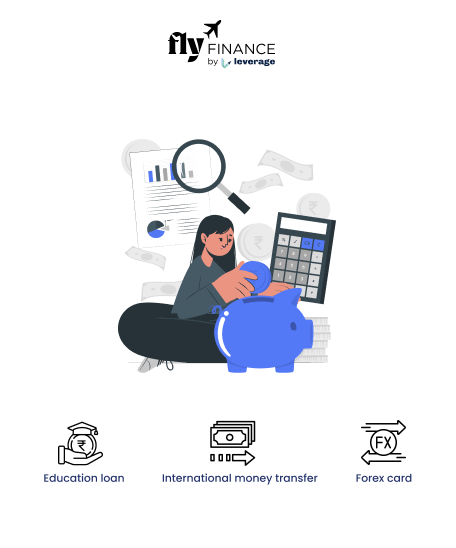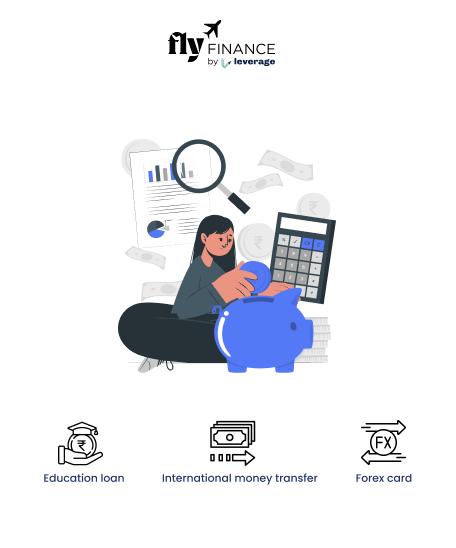Over Limit Facility in Credit Card: Credit cards simplify payments, offer rewards, and provide financial flexibility. However, each card has a credit limit that caps your spending. When you need to exceed this limit, the over limit facility can help.
This guide explains what is over limit facility in credit card, how it works, its benefits, costs, and practical tips to use it responsibly, ensuring you stay in control of your finances.
- What Is Over Limit Facility in Credit Card?
- How Does the Over Limit Facility in Credit Card Work?
- Why Do Banks Offer the Over Limit Facility?
- Benefits of the Over Limit Facility in Credit Cards
- Costs and Risks of the Over Limit Facility
- How to Use the Over Limit Facility Responsibly
- Strategies to Avoid Over Limit Fees
- Alternatives to the Over Limit Facility
- FAQs on Credit Card Over Limit Facility
What Is Over Limit Facility in Credit Card?
The over limit facility allows cardholders to spend beyond their credit card’s assigned limit, offering a buffer for urgent or high-value purchases. Understanding the over limit facility in credit card is essential for making informed financial decisions, as it comes with specific terms set by banks.
The over limit facility in credit card features is particularly useful during emergencies, such as medical expenses or unexpected travel costs. Banks in India, like HDFC, SBI, ICICI, and other well known banks offer this facility to eligible customers, typically allowing spending up to 10-20% above the credit limit, subject to approval.
- Definition: A bank-approved feature to exceed your Indian or foreign credit card limit temporarily.
- Eligibility: Available to cardholders with strong credit scores and timely repayments.
- Purpose: Supports urgent expenses when your credit limit is insufficient.
Also Read: Best Forex Cards for Indian Students Studying Abroad
How Does the Over Limit Facility in Credit Card Work?
The over limit facility in Credit Card operates under strict bank guidelines, requiring cardholder consent and eligibility. Knowing how it functions helps you use it effectively without unexpected surprises. When you attempt a transaction exceeding your credit limit, the bank evaluates your profile and may approve it under this facility.
For example, if your credit limit is INR 50,000 and you swipe for INR 60,000, the bank may allow the transaction if you’ve opted in, charging an over limit fee. Per RBI regulations and global standards like the CARD Act of 2009, you must explicitly enable this feature to avoid automatic approvals.
Why Do Banks Offer the Over Limit Facility?
Banks provide the over limit facility in Credit Card to enhance customer experience and support financial needs. Exploring the reasons behind this feature reveals its value for both cardholders and issuers.
The over limit facility in Credit Card prevents transaction declines, builds trust, and caters to loyal customers. It’s particularly beneficial during festive seasons or emergencies when spending spikes.
- Emergency Support: Covers unexpected costs like medical bills or repairs.
- Transaction Continuity: Avoids declines for essential purchases near your limit.
- Customer Retention: Demonstrates bank flexibility, fostering long-term loyalty.
- Revenue Generation: Banks earn fees and interest on over limit amounts.
Benefits of the Over Limit Facility in Credit Cards
The credit card over limit facility offers significant advantages, making it a valuable tool when used judiciously. These benefits highlight why cardholders find it appealing for managing financial gaps.
Whether it’s covering a hospital bill or funding a last-minute flight, the over limit facility in Credit Card feature ensures you’re not left stranded. It also strengthens your relationship with the bank by showcasing mutual trust.
- Financial Flexibility: Handles high expenses during cash flow shortages.
- Prevents Embarrassment: Ensures transactions succeed, avoiding declines.
- Emergency Access: Provides immediate funds for critical needs.
- Exclusive Perk: Offered to reliable customers, enhancing cardholder status.
Costs and Risks of the Over Limit Facility
While the over limit facility in Credit Card is convenient, it carries costs and risks that require careful consideration. Understanding these helps you avoid financial pitfalls and maintain control. Here are the key aspects:
- Over Limit Fees: Banks charge an over limit fee for exceeding your credit limit, typically 2.5-5% of the excess amount or a minimum of INR 500-INR 600, plus 18% GST. For example, spending INR 10,000 over an INR 50,000 limit may incur a INR 500 fee.
- Interest Charges: Over limit amounts accrue interest at rates higher than standard Indian or international credit cards rates (often 3-4% per month). These amounts don’t qualify for the interest-free period, increasing repayment costs.
- Credit Score Impact: Frequent over limit usage raises your credit utilization ratio, ideally kept below 30%. A high ratio signals financial stress, potentially lowering your credit score and affecting future loan approvals.
How to Use the Over Limit Facility Responsibly
Using the over limit facility with credit cards wisely ensures you benefit without facing financial strain. These actionable tips, inspired by best practices, guide you in managing this feature effectively.
- Limit to Emergencies: Use only for critical needs, like medical or travel expenses.
- Track Spending: Monitor your balance via mobile apps or online banking.
- Set Alerts: Enable bank notifications to warn you when nearing your limit.
- Plan Repayments: Repay over limit amounts quickly to minimize fees and interest.
- Explore Alternatives: Consider personal loans or borrowing from family for non-urgent needs.
Strategies to Avoid Over Limit Fees
Preventing over limit fees in credit cards is easier than managing them after the fact. These proactive strategies help you stay within your credit limit and maintain financial discipline. Here some strategies:
- Request a Higher Limit
If your limit feels restrictive, ask your bank for an increase. A strong repayment history and stable income boost approval chances. - Monitor Expenses
Use budgeting apps or bank tools to track spending in real time, ensuring you don’t overspend unintentionally. - Opt Out of the Facility
If you want to avoid temptation, disable the over limit facility. This ensures transactions exceeding your limit are declined.- Limit Increase: Contact your bank to raise your credit limit based on eligibility.
- Expense Tracking: Use apps like Moneycontrol or bank portals for real-time monitoring.
- Opt-Out Choice: Disable the facility to enforce spending discipline.
- Timely Payments: Clear your balance monthly to maintain available credit.
Also Read: MCTC Full Form in Banking: Multi-Currency Travel Card
Alternatives to the Over Limit Facility
Relying on the over limit facility in credit cards regularly can lead to debt. Exploring alternatives provides safer ways to manage financial needs, as suggested by industry insights.
- Personal Loans: Offer fixed interest rates and structured repayments, ideal for large expenses.
- Borrowing from Family: Interest-free and flexible, suitable for short-term needs.
- Salary Advances: Request an advance from your employer for urgent cash flow.
- Gold Loans: Secured loans with lower interest rates, using gold as collateral.
The over limit facility on a credit card provides a valuable lifeline for exceeding your credit limit during emergencies or high-spending periods. Understanding what is over limit facility in credit card—its mechanics, benefits, and risks—empowers you to use it strategically. While it offers flexibility and prevents transaction declines, over limit fees, high interest, and credit score impacts require cautious use.
FAQs on Credit Card Over Limit Facility
The over limit facility in credit cards allows you to spend beyond your credit card’s limit, typically by 10-20%. It’s available to cardholders with good credit scores and timely repayments, subject to bank approval.
For over limit facility in credit card, banks charge a fee of 2.5-5% of the excess amount or a minimum of INR 500-INR 600, plus 18% GST. Over limit amounts also incur high interest (3-4% monthly) without an interest-free period.
Yes, the over limit facility in Credit Cards affects your credit score. Frequent use increases your credit utilization ratio above 30%, which may lower your credit score by signaling financial stress to credit bureaus.
To avoid over limit fees in credit cards, you should monitor spending with budgeting apps, set bank alerts, request a higher credit limit, or opt out of the facility to prevent transactions exceeding your limit.
Yes, there are some alternatives to using the over limit facility with credit cards, such as personal loans, borrowing from family, salary advances, or gold loans, which offer lower interest rates or more structured repayment options.
If your credit card exceeds its limit and you’ve opted into the credit card over limit facility, the bank may approve transactions beyond your limit, charging a fee (typically 2.5-5% of the excess or INR 500-INR 600 minimum, plus 18% GST) and high interest (3-4% monthly). Without the facility, transactions are declined, potentially causing inconvenience. Frequent over limit usage may also increase your credit utilization, harming your credit score.
Overlimit coverage, also known as the over limit facility, allows cardholders to spend beyond their credit card’s assigned limit, typically by 10-20%, with bank approval. Understanding what is over limit facility in credit card helps clarify that this coverage is a financial buffer for emergencies, like medical bills, but it incurs fees and interest. You must opt-in to enable it, as per RBI and global regulations.
Yes, using the over limit facility increases your credit utilization ratio, which compares your balance to your credit limit. A ratio above 30%—common with overlimit usage—signals financial strain to credit bureaus, potentially lowering your credit score. Regular overlimit transactions can further damage your credit profile, affecting future loan or card approvals.
Using 100% of your credit card’s limit maximizes your credit utilization ratio, which may negatively impact your credit score, as ratios above 30% are viewed unfavorably by credit bureaus. If you attempt to spend beyond this, transactions are declined unless you’ve enabled the over limit facility, which allows extra spending but incurs fees (INR 500-INR 600 or 2.5-5%) and high interest, increasing debt risk.
To avoid over limit fees in credit card, monitor your spending via mobile apps or bank portals, set alerts to warn you when nearing your limit, and pay your balance regularly to maintain available credit. Request a higher credit limit if needed, or opt out of the over limit facility in credit card to ensure transactions exceeding your limit are declined, preventing fees altogether.
Using over 90% of your credit limit significantly raises your credit utilization ratio, often exceeding the recommended 30% threshold, which can lower your credit score. It also leaves little room for additional spending, risking transaction declines unless the over limit facility is active. With the facility, you may incur fees and interest for exceeding the limit, adding to your costs.
To use the over limit facility in credit card, first opt-in through your bank’s app, website, or customer service, as required by regulations. When making a purchase exceeding your limit (e.g., INR 55,000 on a INR 50,000 limit), the bank evaluates your credit profile and may approve the transaction. Monitor usage via alerts, repay the excess promptly to minimize fees (INR 500-INR 600 or 2.5-5%) and interest, and use it only for emergencies.
To learn more about bank accounts for students, the best education loans, forex, banking experience for global students, or international money transfers, reach out to our experts at 1800572126 to help ease your experience with studying abroad.





























